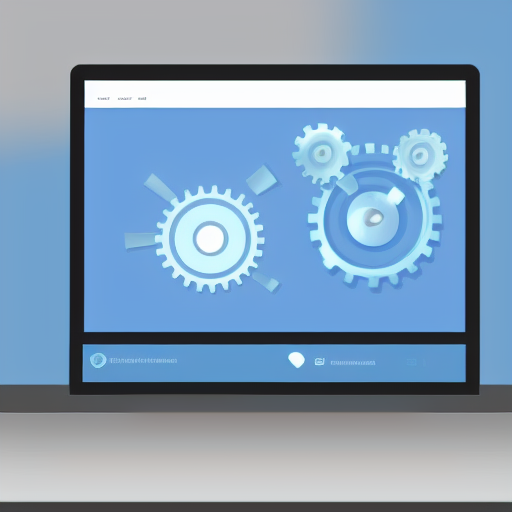Diving into the world of APIs?
In this article we’ll explore their differences between RESTful and SOAP APIs and help you decide which one is right for your project.
SOAP API
Overview of SOAP API
SOAP, which stands for Simple Object Access Protocol, is a web services protocol that has been widely used since the early 2000s.
SOAP uses XML as its primary data format and relies on a strict set of rules for communication between client and server.
Key Characteristics of SOAP API
- Rigid structure: SOAP has a strict protocol with predefined rules.
- XML-based: SOAP uses XML as its primary data format.
- Support for WS-* standards: SOAP has extensive support for various web service standards, such as WS-Security, WS-Addressing, and WS-ReliableMessaging.
RESTful API
Overview of RESTful API
Representational State Transfer (REST) is an architectural style for designing networked applications.
A RESTful API adheres to the principles of REST, making it easy to develop, maintain, and scale. RESTful APIs use HTTP or HTTPS as their underlying protocol and support various data formats, including JSON, XML, and plain text.
Key Characteristics of RESTful API
- Stateless: Each request is independent of others, and the server does not store client context between requests.
- Cacheable: Responses can be cached by clients, improving performance.
- Client-Server architecture: A clear separation of concerns between the client and server.
- Multiple data formats: RESTful APIs support various data formats, such as JSON, XML, and plain text.
Comparing SOAP and RESTful APIs
| Feature | SOAP API | RESTful API |
|---|---|---|
| Protocol/Architecture | Strict protocol with predefined rules | Flexible architectural style |
| Data Formats | XML | JSON, XML, plain text, and more |
| Flexibility | Rigid structure | Highly flexible |
| Scalability | Less scalable due to its stateful nature | More scalable due to statelessness and caching |
| Security | Built-in support for WS-* standards | Can be secured using OAuth, API keys, HTTPS |
| Performance | Slower due to XML verbosity | Faster due to lightweight data formats |
| Ease of Development | More complex due to strict rules | Easier to develop, maintain, and understand |
Protocol and Architecture
SOAP is a protocol with a strict set of rules, while REST is an architectural style that can be applied to various protocols, including HTTP and HTTPS. RESTful APIs are often easier to develop and maintain due to their flexibility and simplicity compared to SOAP APIs.
Data Formats
SOAP exclusively uses XML, while RESTful APIs support multiple data formats, including JSON, which is generally more lightweight and easier to work with than XML.
Flexibility and Scalability
RESTful APIs are more flexible and scalable due to their stateless nature and support for caching.
This makes RESTful APIs a better choice for large-scale applications with high throughput requirements.
Security
SOAP has built-in support for various security standards, such as WS-Security, making it a more suitable choice for enterprise-level applications with strict security requirements.
However, RESTful APIs can also be secured using methods like OAuth, API keys, and HTTPS encryption.
Performance
RESTful APIs typically offer better performance due to their support for caching and lightweight data formats like JSON. SOAP, on the other hand, relies on the verbose XML format, which can lead to increased network traffic and slower processing times.
Which API is Better?
There is no one-size-fits-all answer when it comes to choosing between RESTful and SOAP APIs.
Each has its own strengths and weaknesses, and the choice ultimately depends on the specific requirements of your project.
By carefully considering factors like security, flexibility, data formats, and development, you can make an informed decision that best suits your needs.
FAQs
Can I use both SOAP and RESTful APIs in a single project?
Yes, you can use both SOAP and RESTful APIs in a single project if it makes sense for your use case. It’s essential to evaluate each API’s advantages and disadvantages and choose the most suitable option for each part of your application.
Is REST always better than SOAP?
No, REST is not always better than SOAP. While RESTful APIs have gained popularity due to their flexibility, scalability, and ease of use, SOAP remains a viable option for specific use cases, such as applications with strict security requirements or those that rely heavily on XML.
Can RESTful APIs be secured like SOAP APIs?
Yes, RESTful APIs can be secured using methods like OAuth, API keys, and HTTPS encryption. While SOAP has built-in support for security standards like WS-Security, RESTful APIs can achieve similar levels of security with proper implementation.
Is it difficult to migrate from SOAP to RESTful APIs?
Migrating from SOAP to RESTful APIs can be a challenging process, as it may require significant changes to the architecture, data formats, and communication methods used in your application. However, the benefits of RESTful APIs, such as improved flexibility, scalability, and performance, often make the transition worthwhile.
What are some alternatives to SOAP and RESTful APIs?
Some alternatives to SOAP and RESTful APIs include GraphQL, gRPC, and JSON-RPC. These technologies offer different approaches to API design and communication, each with their own advantages and trade-offs.
